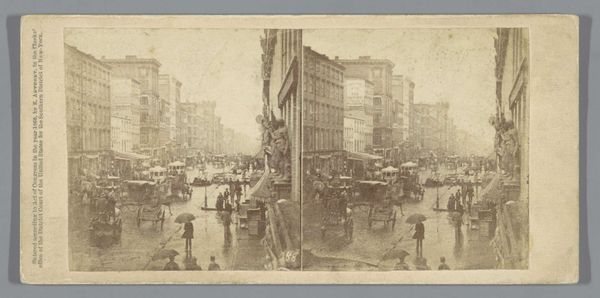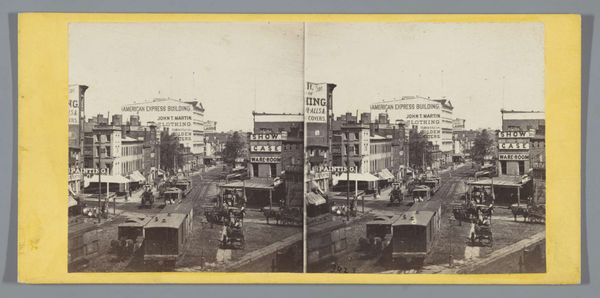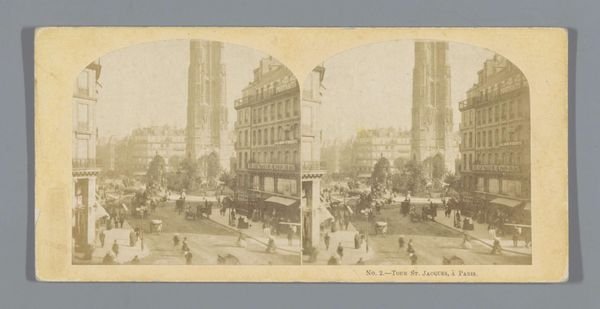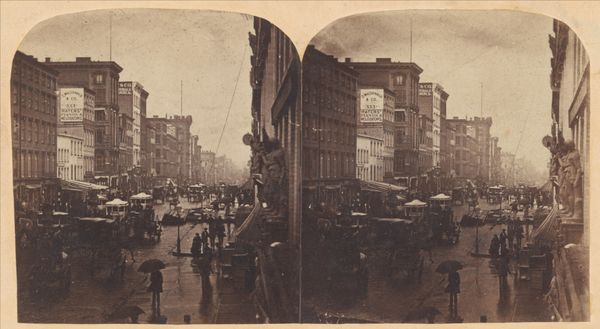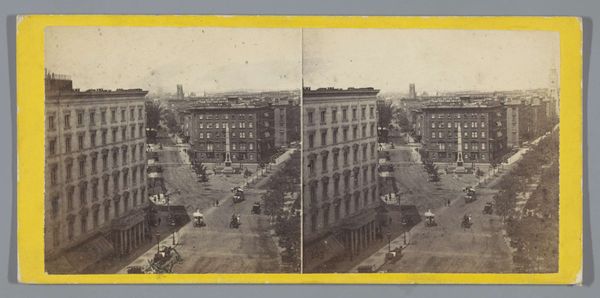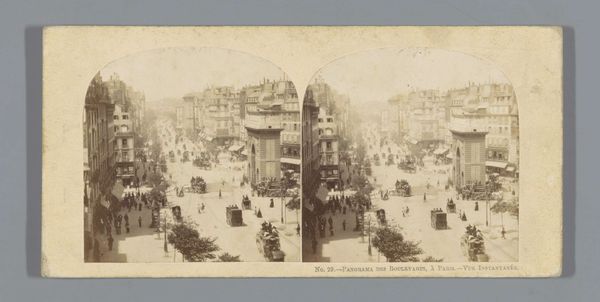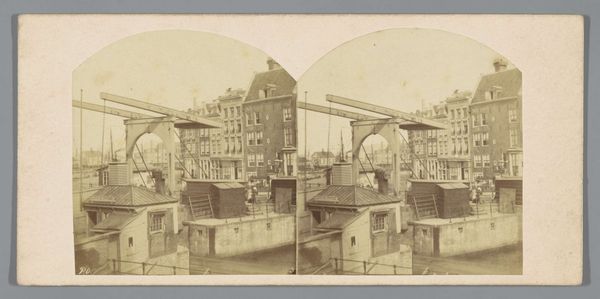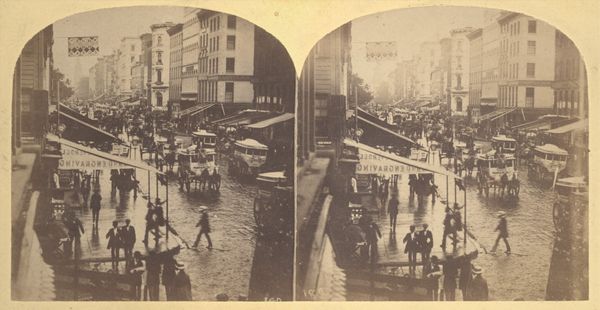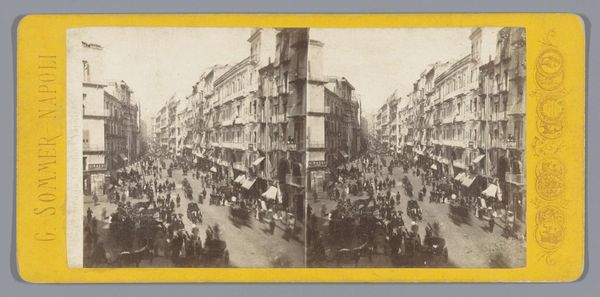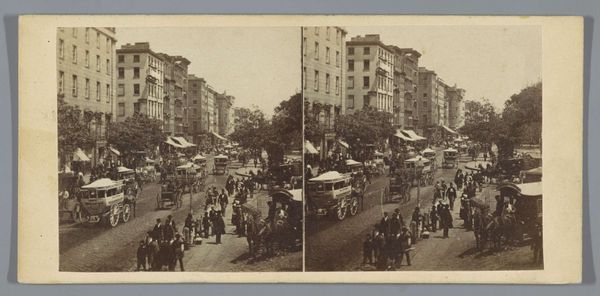
photography
#
pictorialism
#
street-photography
#
photography
#
19th century
#
cityscape
Dimensions: height 81 mm, width 154 mm, height 89 mm, width 178 mm
Copyright: Rijks Museum: Open Domain
Curator: John Fillis Jarvis created this engaging street scene, “Gezicht op Ludgate Hill te Londen,” around 1887. Editor: The energy hits you right away, doesn't it? Look at the chaotic mix of horse-drawn carts and pedestrians. You can almost smell the coal smoke and feel the jostling crowd! Curator: Indeed. Jarvis's work falls within the pictorialism movement, so his photographs are carefully constructed scenes rather than simple documents of reality. He uses photography to evoke an emotional response, often focusing on daily life and the burgeoning urban environment. Editor: I’m fascinated by the construction of those carts, the sheer variety and what appears to be ad-hoc modifications made by the workers and owners who relied on them daily. These were essential pieces of technology for commerce in late 19th-century London. They carried the goods of empire. Curator: Exactly! The placement of that ornate pedestrian bridge speaks volumes too. It reflects London's class structure and attempts to alleviate congestion without disrupting the established economic order. Notice how Jarvis frames it – a monument to urban planning. Editor: A monument perhaps but also a divider, a means to keep certain bodies in certain lanes to keep commerce flowing at all costs. It's a system manifested in brick, stone, and steel! Curator: Fair point. It does underscore how cities adapted—and often strained—under rapid industrial expansion. This wasn't just an aesthetic choice; it reflected social control, mobility, and economic efficiency in rapidly changing cities. Editor: Considering the materials available and the demands on the workforce, the engineering required to build infrastructure to support this expanding industry and ever-growing population is impressive. You’re also reminded of the labor – unseen, unacknowledged but clearly evident here – that supported this society. Curator: I appreciate your insights. It gives a deeper understanding of how political and cultural context affect the meaning we derive from artwork. Editor: Thanks. Seeing art this way—understanding it’s materials, methods and processes—makes the image even more valuable. It links us with past laborers, past creations and previous lives.
Comments
No comments
Be the first to comment and join the conversation on the ultimate creative platform.
